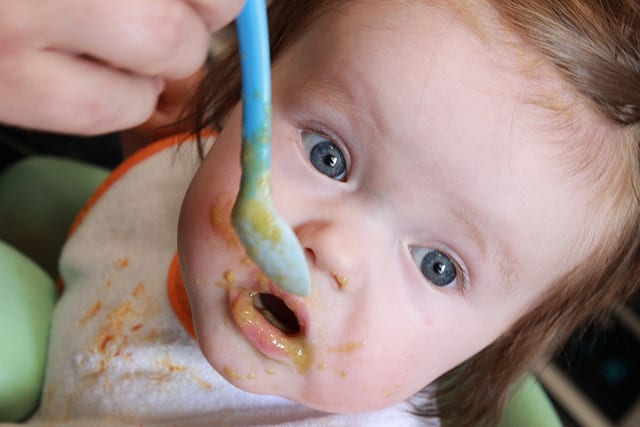
I have found a article published by the newspaper La Razón, whose title "When should we wean our children?" it seemed somewhat confusing to me; Well, although weaning occurs at one time or another (and also the omens that the boy or girl will go hanging from the tit to the University are a lie 😉), Expressing it in the form of 'DUTY' does not seem appropriate to me, because it is rather a negotiation, a decision, ... an agreement between both parties.
I want to say that talking about obligations in matters of breastfeeding is a bit ugly, but we continue because the main topic that I want to expose, although it is related to weaning, is deeper than the introduction above. Two ideas are developed that should not be as connected as the input intends, namely: the introduction of complementary feeding and weaning. Because yes, starting to feed baby solids is something that happens, but although milk production may be reduced as a result, it does not have to end with immediate weaning, it 'should not'.
I have to say that the editor of the aforementioned newspaper is based in a scientific journal called New Scientist, which in turn mentions several studies in the sense that delaying the age of initiation in feeding with solids could be related to the development of allergies, but it turns out that they refer to the introduction before six months. They also mention an issue that perhaps we should develop another day and that is the concern that babies fed only breast milk could suffer from iron deficiencies..
However, here we were already pointing shyly that after delivery, nursing babies have sufficient iron stores for a few months; This is explained by pediatrician Carlos González here, when he states that "it is calculated that these reserves are depleted between 6 and 12 months", an age at which we should make sure that the baby eats foods rich in iron.
Breastfeeding, until when?
Well, up to 6 months exclusively and up to 24 months together with complementary feeding, according to the Spanish Association of Pediatrics this is a 'gold standard'; and there are other international organizations that coincide with the information. New Scientist developed the recommendation to give complementary feeding prematurely based in part on the interest that babies often have in the food of their siblings and parents. That is true, but taking up to 6 months, or even giving them a taste of some vegetables or fruit (cooked and mashed) around 5 and a half, is possible. From 6 months it is convenient to breastfeed before they eat the other food.
I recommend rereading this post of ours, it will surely clarify many doubts.. On the other hand, the recommendation of foods that could potentially be allergenic (such as nuts) before 6 months seems very daring, and I think that a hypothetical avoidance of allergies does not justify it. In addition we already spoke here that the introduction before 6 months of foods with gluten does not modify the risk of developing celiac disease.

When is the baby ready to eat solid foods?
In addition to taking into account the aforementioned recommendations, make sure your child is interested in a food other than mom's milk, is left hungry and asks to breastfeed more often, intends to chew or is able to sit up.
By when we wean?
Well, for when the mother and the baby want, not having relation to the age of introduction of solid food, It is also that the weaning age can be very variable, and although there are several factors that will influence it, it is not convenient that an external imposition results to this relationship. There is no 'ideal age' for weaning, because if you try to find them, you will find mere opinions or preconceptions without any basis.
I believe that by now we all accept that in addition to feeding and protecting, breastfeeding nurtures emotions and serves as a bond with the little child, even when he is one, two or 3 years old. Nobody cares when a woman is weaned What is true is that a very high percentage of children do it before the age of 6So no one worry that when the baby becomes a teenager he will not have to take his mother with him to the institute, that's for sure, why then give up on breastfeeding?
It is important to do it with tact, explain it to the child, make a decision together, respect the decision of the little one who at 2 years of age does not want to continue breastfeeding (even if you have friends who breastfeed their 4-year-old daughter). Accept in advance that the mother will feel a loss, and if she makes an arbitrary decision, it will continue to manifest itself over time, and that the baby, if it is under 3 years old, may not understand 'why it is deprived', that is, it will assimilate what happens but emotionally it will be complicated.
In short, let's not mix things up and don't think that the introduction of complementary feeding means that weaning must occur.
Images - Carolyne dubé, bradleygee